I travel to see geological sites, to attend festivals, and to experience culture. But one of my favorite reasons to travel is to see unique animals in the wild. In 2024, I added one of the cutest animals ever to my list – the Quokkas of Rottnest Island, located off the southwest coast of Australia.

When Dutch explorer Willem de Vlamingh spied his first Quokkas in 1696, he described them as “a kind of rat as big as a common cat.” There must have been hundreds of thousands at the time, roaming around an island at the mouth of Australia’s Swan River. De Vlamingh apparently was not enamored; he named the island ‘Rotte Nest’ (‘rats’ nest’). Today Rottnest Island, located a short ferry ride from the Western Australian port of Fremantle, is still home to around 10,000 Quokkas.

Australia is the only place in the world where people can see Quokkas. In addition to Rottnest Island, a small community exists in the forests on the southwest tip of the mainland. However Rottnest is the destination of choice for anyone hoping to see them. The idea that Quokkas are a big rat persists, but the moment they move it becomes obvious that they are small marsupials. They have a pouch for their infants, strong back legs that are used to hop around, and short arms with claws that are used to balance as they hop from place to place. A nocturnal animal in its natural state, these Quokkas have learned to stay active during daylight hours, as they find tourists easy prey for mooching. I spotted several on the cafe deck, sidling up to the diners, hoping to score falling crumbs.
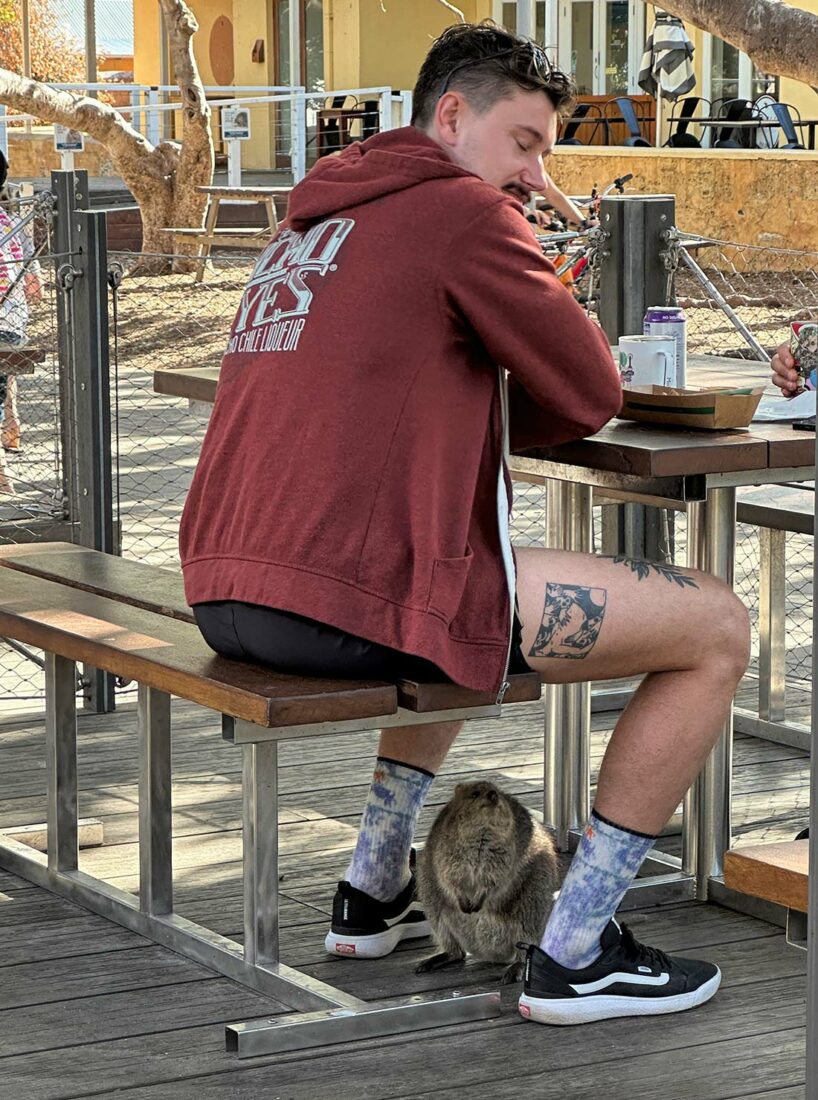
In my quest to see Quokkas, I took the 7 a.m. Sealink Ferry from Fremantle, which made the journey in 35 minutes. That gave me an hour and a half to peruse the many Rottnest Island free volunteer walking tours available at the Salt Store Information Center and have a leisurely breakfast before meeting my guide, Dee, for a walk around the main settlement area.
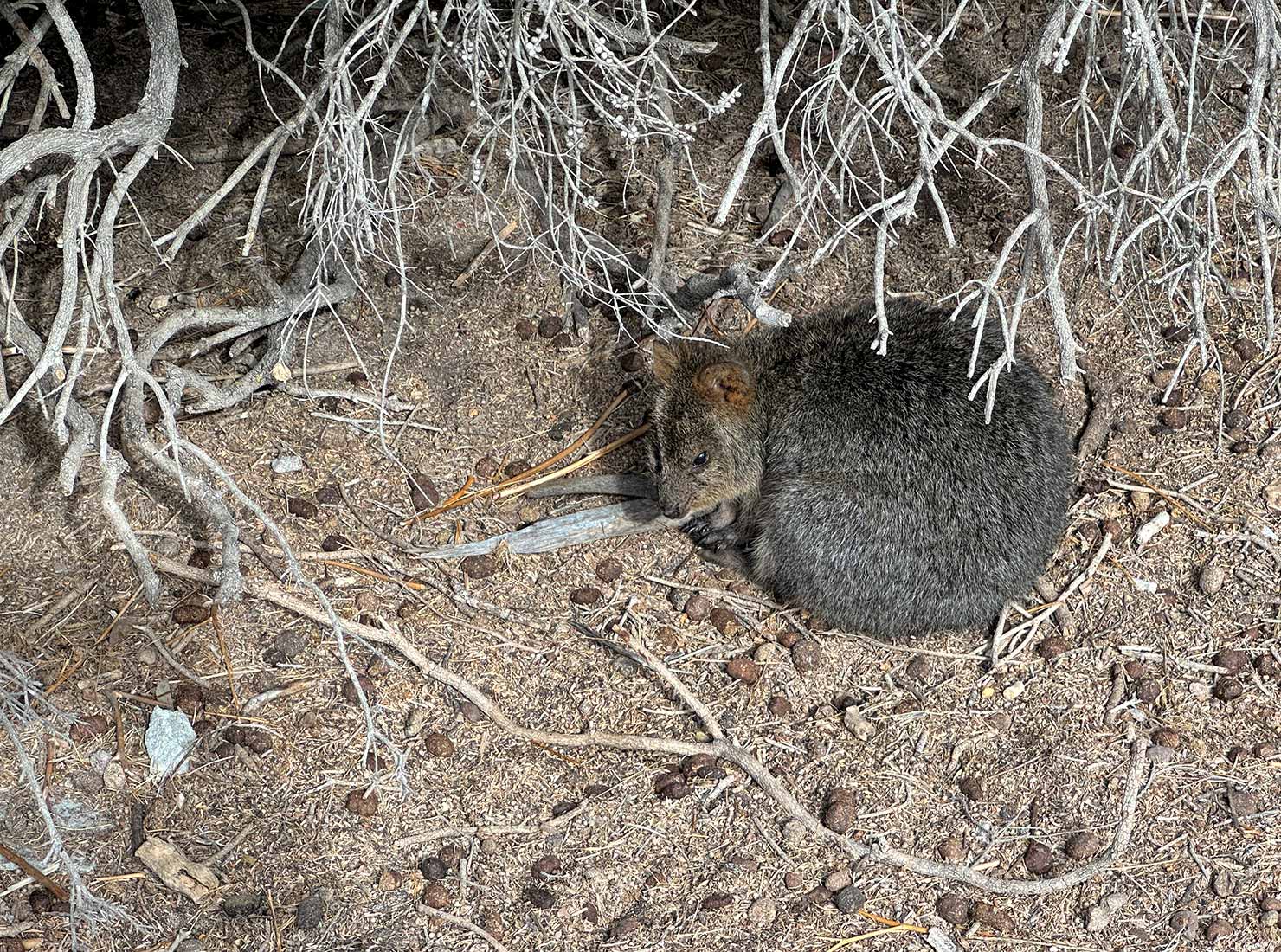
Dee and I began along the shoreline of Garden Lake, where we spotted more Quokkas, curled up under pine tree boughs, in semi-wakeful states. Over the next 40 minutes, she told me the history of the island, peppering her lecture with curious stories about pioneers and prisoners who lived and worked on Rottnest Island. I could barely tear myself away from hunting for Quokkas, but the island has much more to offer to anyone visiting the Perth area, and I wanted to see as much of it as possible. Rather than take another guided tour, I opted for the Hop-on/Hop-off bus that circles the island. For the rest of the day I hopped on and off, spending 20 or so minutes exploring different areas before boarding the next bus.
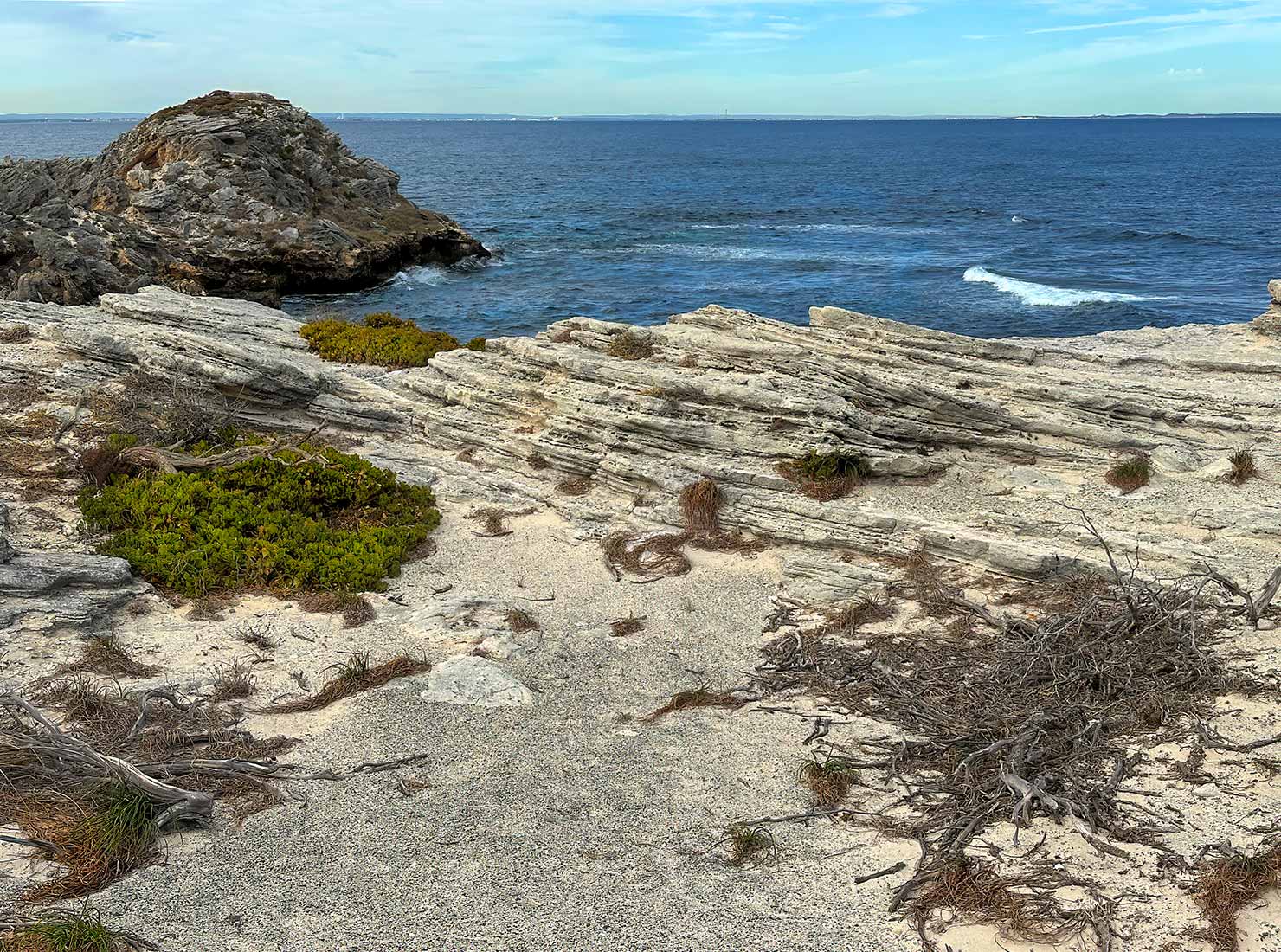
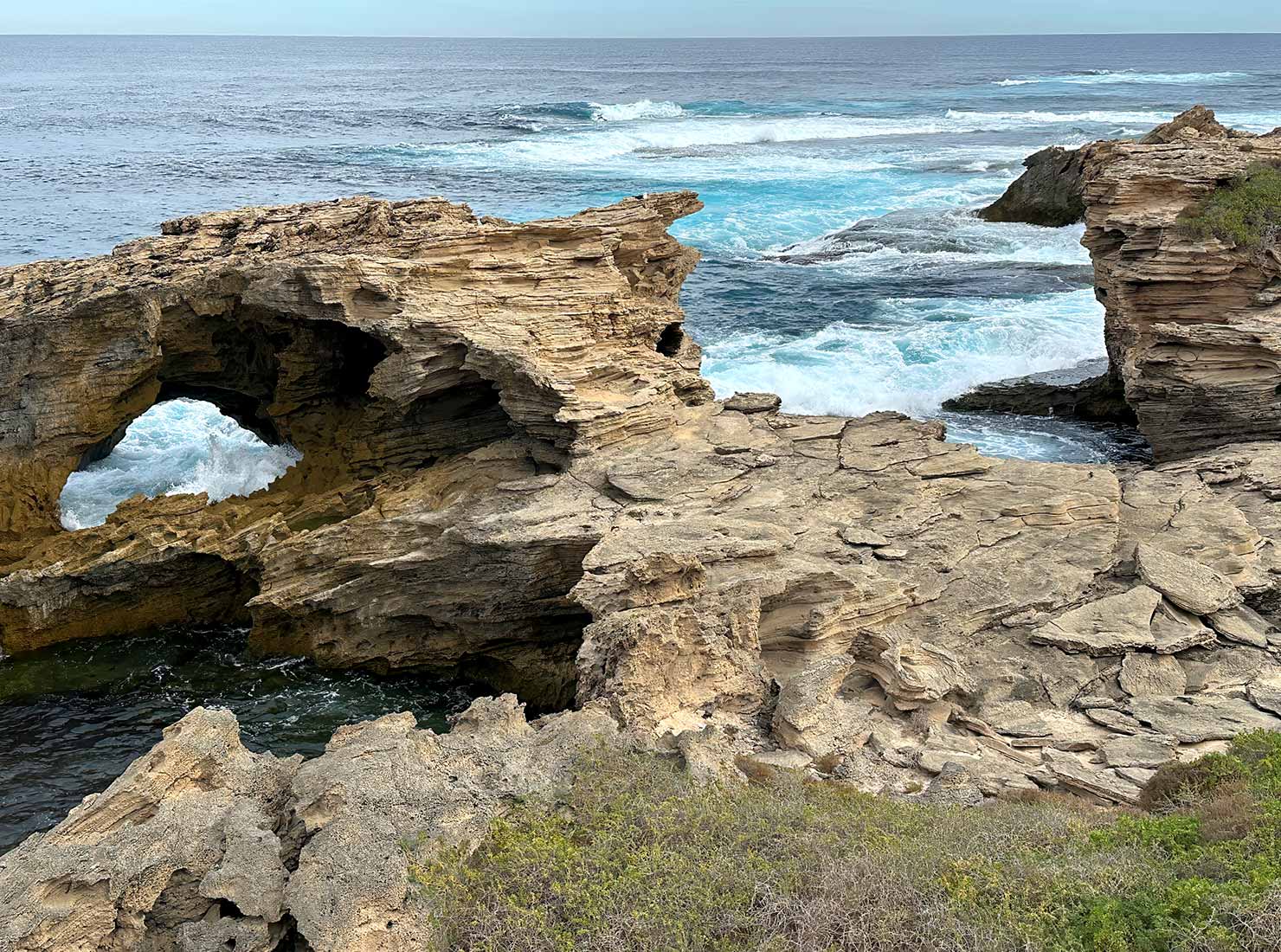
Rottnest is starkly beautiful. It is part of a limestone ridge that was once attached to the mainland. When glaciers melted at the end of the last ice age, sea levels rose and separated it from the mainland. Since then it has developed as a unique and somewhat fragile ecosystem. In addition to Quokkas, the island is home to skinks (snake-like lizards) that dart between cracks in the crumbling limestone, Osprey that build enormous nests on inaccessible rocky promontories, dolphins that frolic just offshore, and fur seals that bask on rocks out of the reach of tourists.
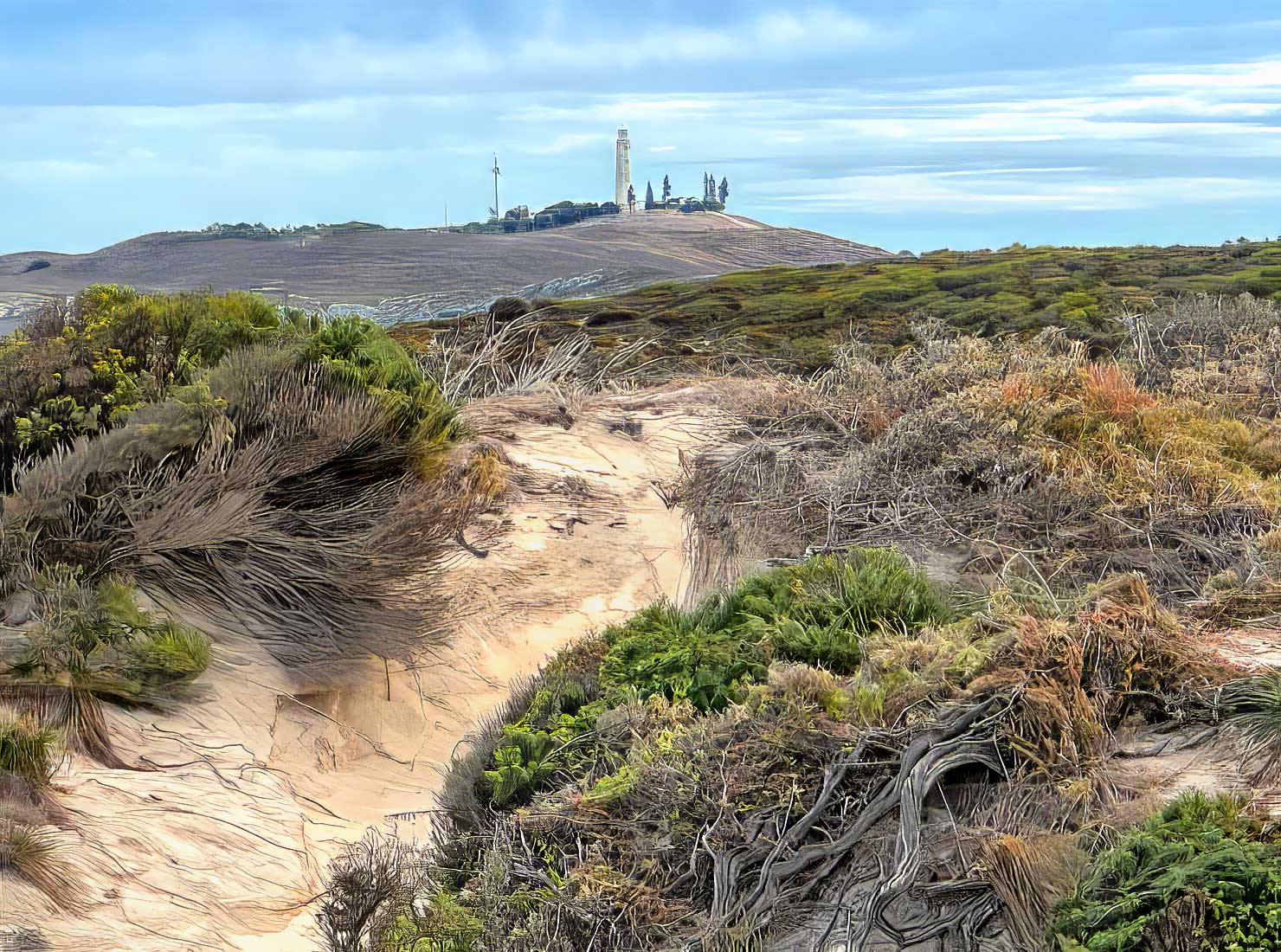
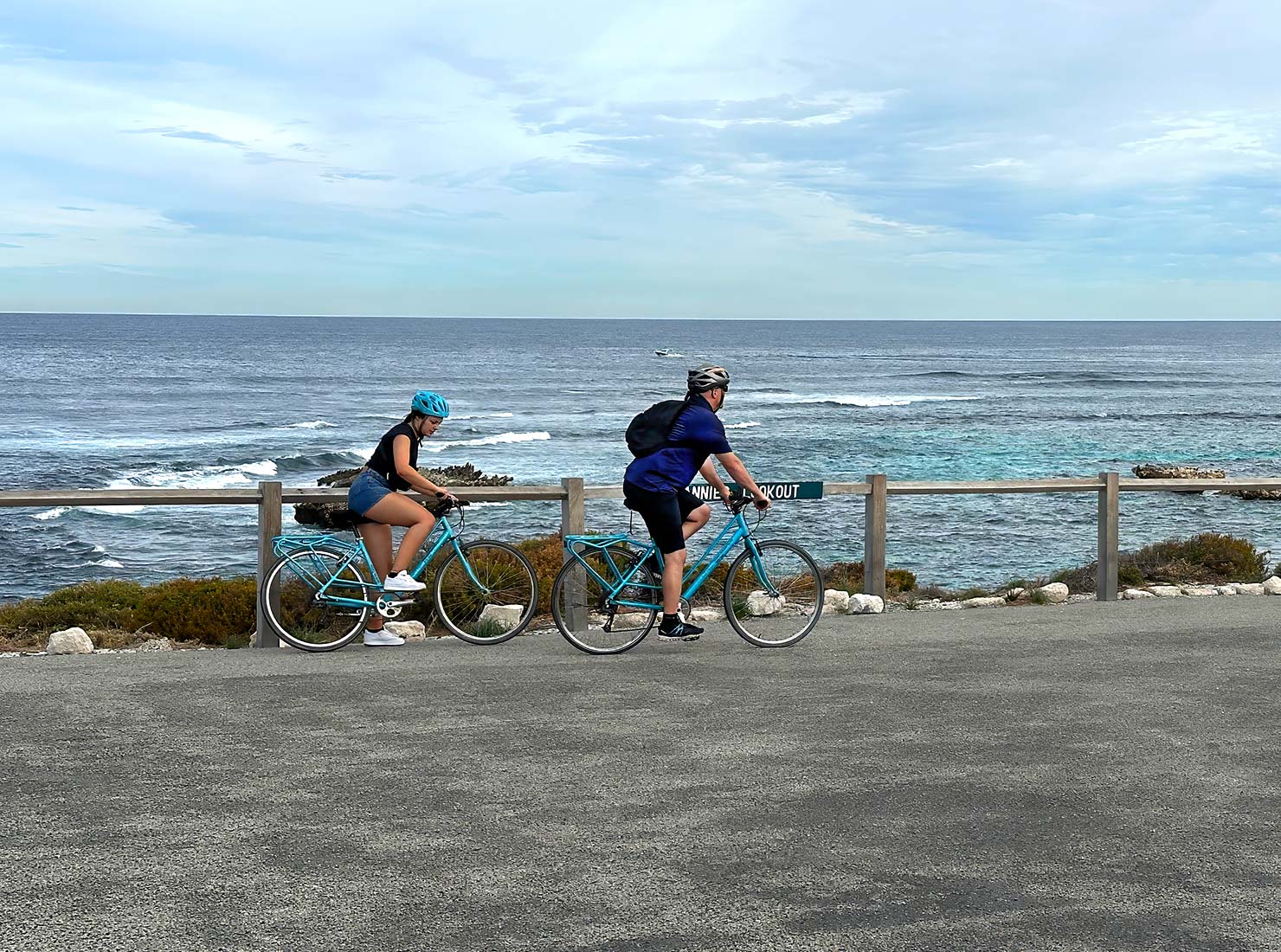
Only salt-tolerant plants are able to grow on Rottnest, mainly scrub bushes and some succulents that can survive long periods with no rainfall. Three species of trees grow on the island, the largest of which is the Melaluca (Australian tea) tree. But even it looks like a scrub desert plant because incessant strong winds bend the trunks flat to the ground, forcing them to grow horizontally.
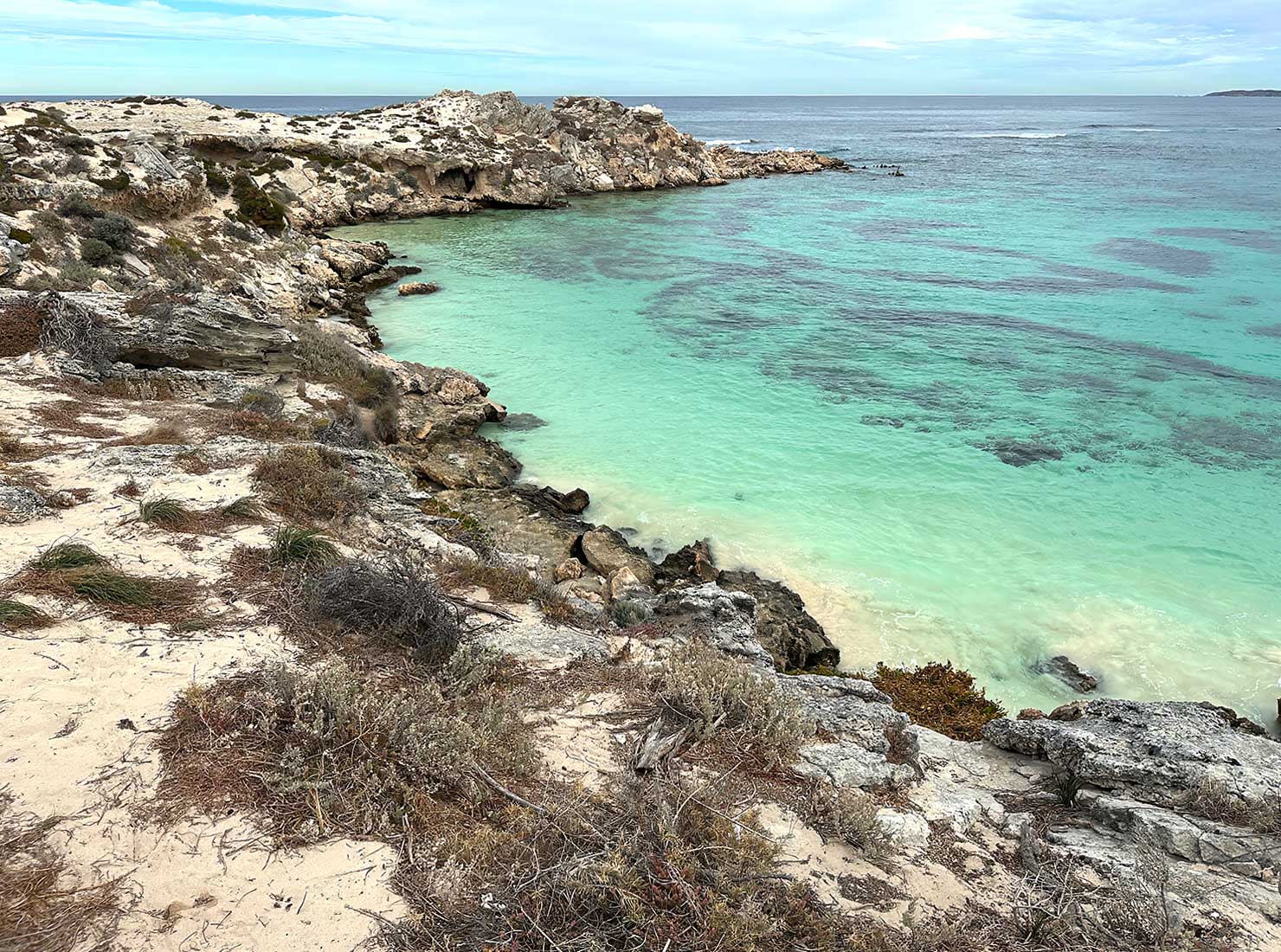
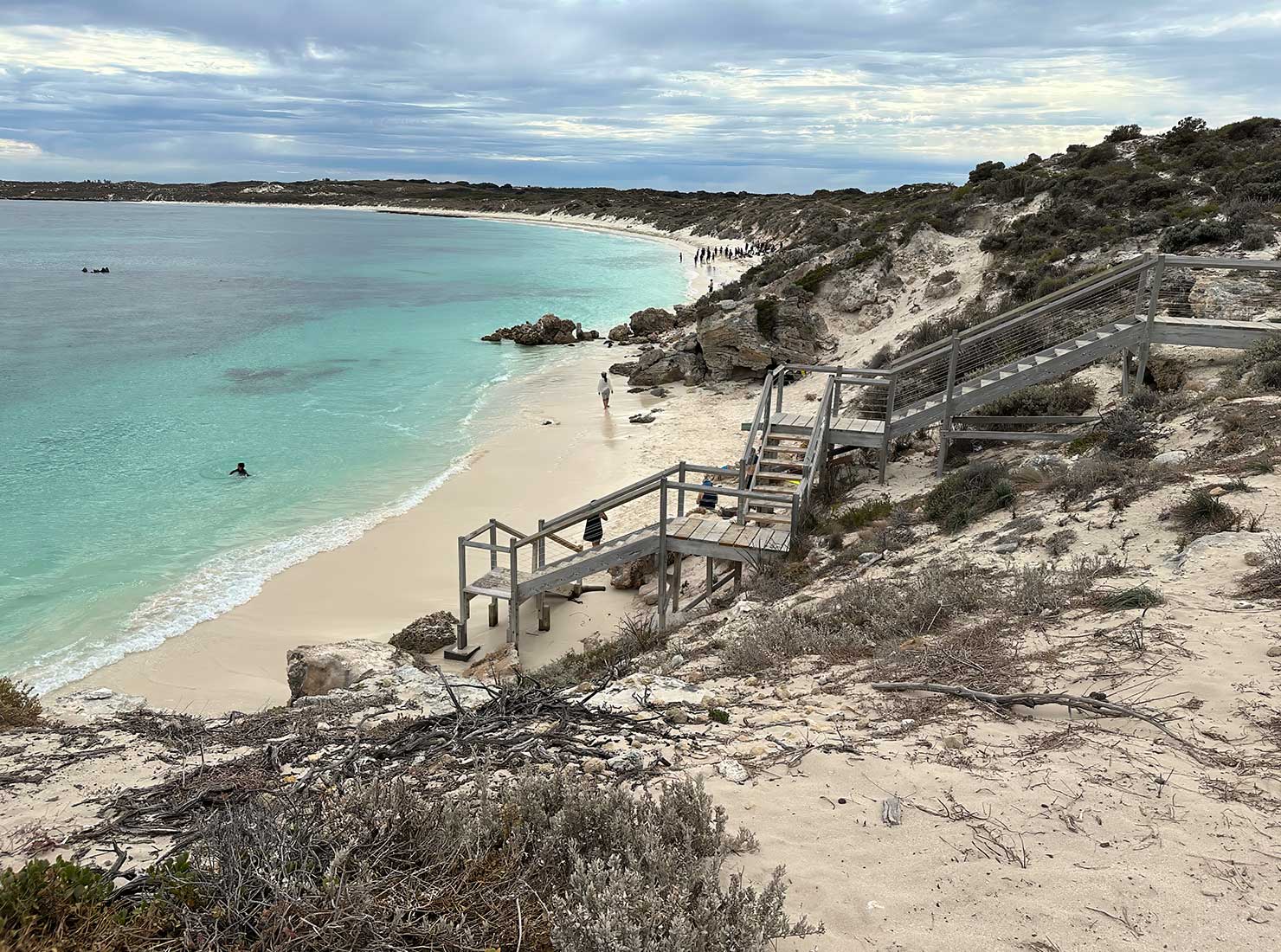
Pure white sand crescent beaches and high dunes punch through the prickly red and green vegetation. The sea and sky bracket the land in a palette of blues ranging from deep cobalt to transparent turquoise. Each element by itself is beautiful. Together, they create an exquisite, post-impressionist painting.
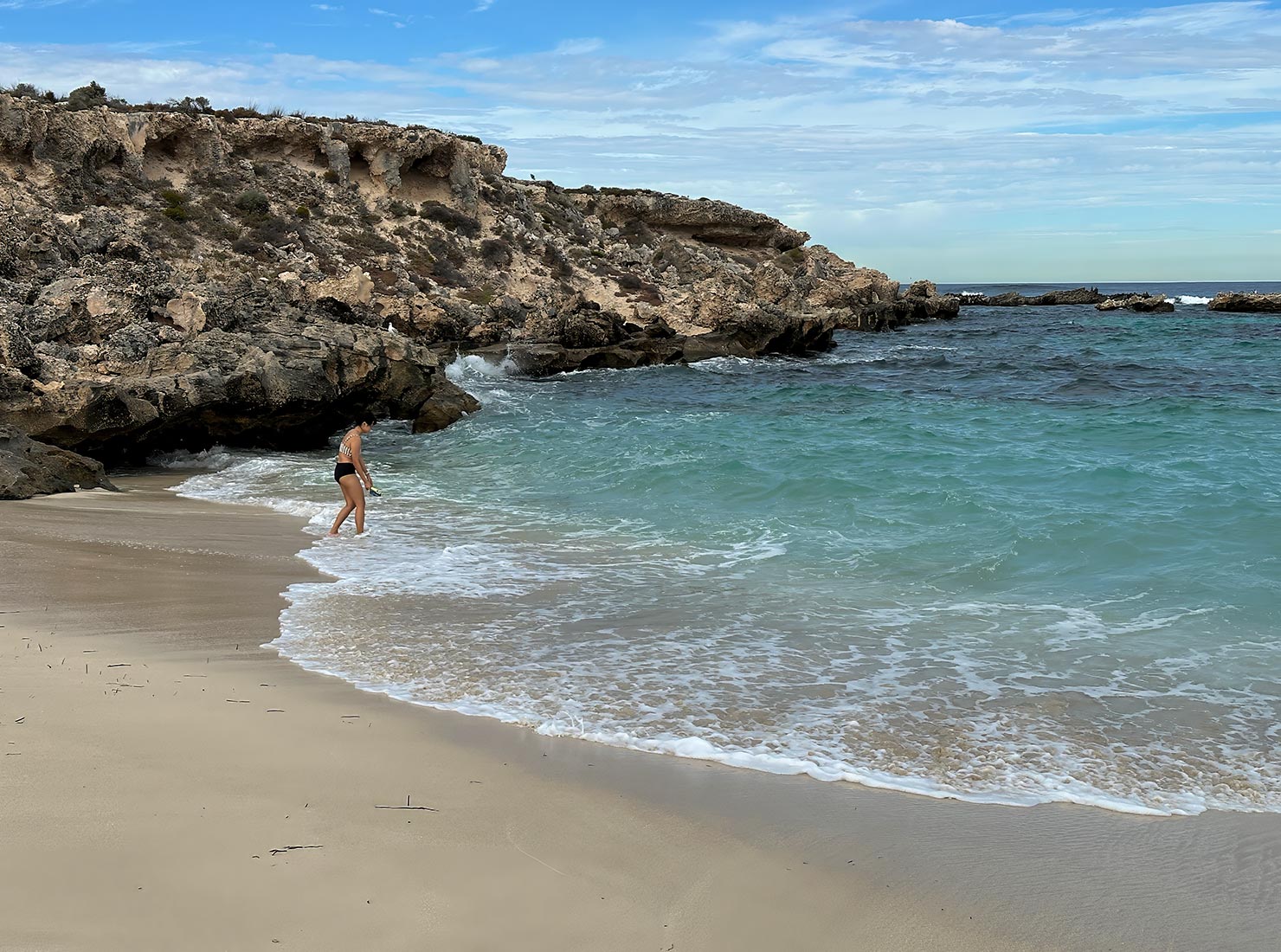
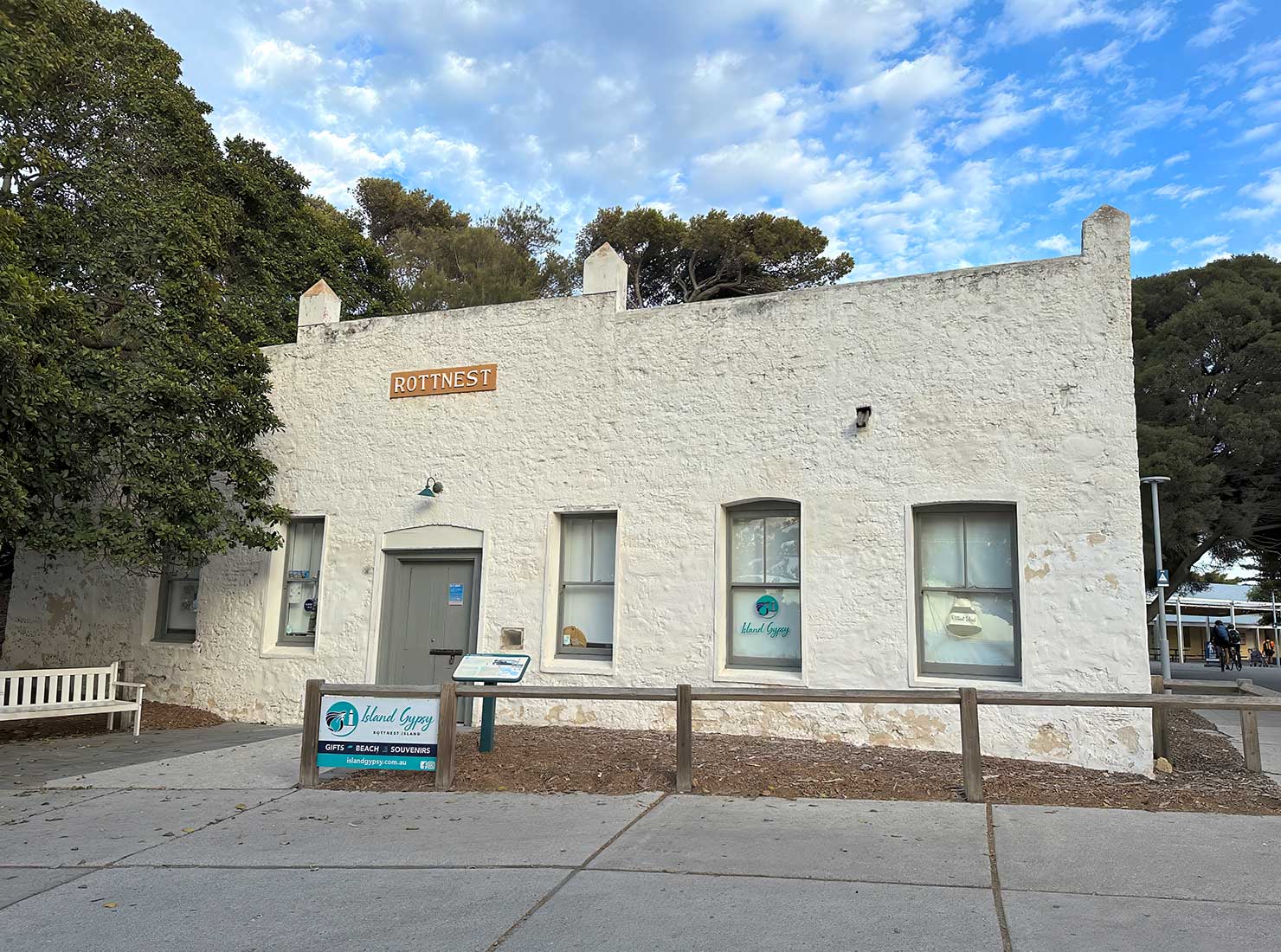
By 2:30 p.m., I had returned to my starting point near the Salt Store Information Center. I had some time to kill before my return ferry, so I went in search of more Quokkas. I didn’t have far to go. Just around the corner, a pair of them were foraging through pine needle detritus in search of food. I sat on a bench, a respectable distance away, and just watched them. As recommended by the experts, I did not try to approach them, feed them, or touch them. Though not endangered or threatened, the Quokka are considered vulnerable due to predation by feral cats and foxes, altered fire patterns, and habitat loss. I want them to be here for all time, so that everyone can enjoy them as much as I did.

What a joy to read this, Barbara! Your vivid descriptions transported me straight to Rottnest Island—I could almost feel the sea breeze and see those adorably curious Quokkas sidling up for crumbs. I love how you balanced the cuteness factor with insightful geological and ecological context; it really highlighted how special and fragile this island is. The fact that Rottnest was once part of the mainland before rising seas transformed it into a sanctuary adds such depth to the experience. Thank you for sharing not just photos, but a real sense of place. This is now firmly on my bucket list!
What a lovely comment Kailash. Thank you for taking the time to write and I am especially delighted that you understood my goal of always weaving culture, history, and ecology into my stories. That meant a lot to me. I do hope you get to see them in person at some point.
Hi! Great to read you again! ?
Those are pretty cute critters!
Thanks so much Vivian. They were the most adorable little marsupials!
Hi Barbara! Love your pictures and commentary.
Paula Wong
Hi Paula! Gosh, I haven’t heard from you in such a long time.I hope you are doing well and still loving life, wherever you are these days.
So glad you are enjoying your travels in Australia. And fab photos!
Thanks so much Deborah. Glad you enjoyed them.
What a wonderful read, Barbara! And, I learned about a new (to me) animal! Fantastic photos, as always too!
Hi Crystal. So glad you enjoyed the story and my photos. I just adored these cute little critters.
Barbara, every time I read about your adventures I add another place to my list!! Thanks (I think…)
Ha ha Jelan! You can imagine the number of stories that I read about destinations. It never fails that I add a new destination to my wish list every week. So pleased you enjoyed my story and photos enough to add it to your wish list.
Great photos I enjoyed the article very much keep them coming please.
Oh Julia, you are always so kind. I’m so glad you enjoyed the story about Quokkas. It feels good to be writing again.
Enjoyed the article. Sorry I missed seeing them on our trip ‘down under’!
Oh boy! That means you have to go back, right???
Oh, the Quokkas, a marsupial, are cute and easy to locate and marvel at.
Great photos, Barbara!
Thank you Marty! So happy you enjoyed my Quokka story.
Wonderful! I hope someday to see Australia and Perth will be the destination thanks to you.
Oh my gosh, Colleen. That’s a really high compliment. Perth is a great destination in Australia. I’m sure you’d enjoy it a lot, and the Quokkas are a bonus.